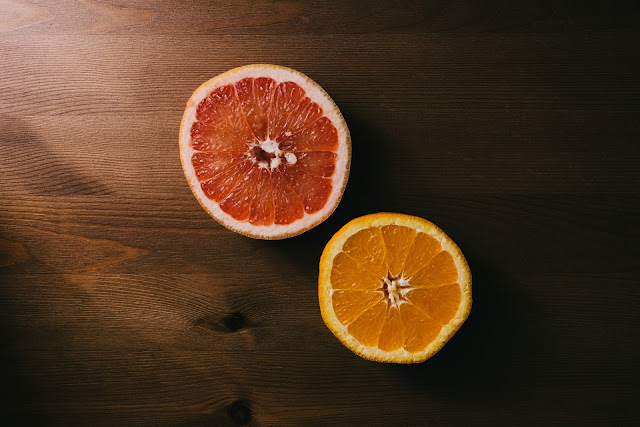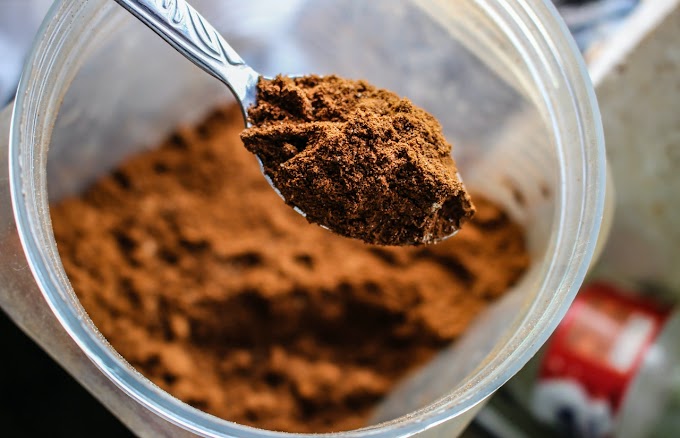What are water soluble vitamins examples and foods | Vitamins B and C
Watersoluble vitamins examples include vitamin C and vitamin B complex: thiamine
(B1), riboflavin (B2), niacin (B3), pantothenic acid (B5), vitamin B6, biotin
(B7), Folic acid (B9), Vitamin B12. Vitamin A in its beta-carotene form is also
water soluble. The sources, deficiencies, quantity of vitamins B and C complex
are described below in our article.
Vitamin - B complex
1) What is Vitamin b1 thiamine used for?
Thiamine is also known as vitamin b1, and vitamin b1
helps to convert glucose into energy and plays a vital role in the nervous
system (nerve function), as well as helps the heart and other muscles function.
And thiamin increases the requirements of b -1 and all b - vitamins.
Thiamine deficiency - commonly found in countries where
white rice is a diet staple. Consumption in Western countries is usually due to
excessive alcohol intake and / or a very poor diet. Symptoms include confusion,
irritability, thin arm or leg (or both) coordination, lethargy, short-term
memory loss, fatigue, and cardiac symptoms (such as heart enlargement) and
muscle weakness.
Sources of Thiamine - Thiamine is naturally present in
some foods: oatmeal, whole wheat, bran, whole brown rice, jaggery, soybeans and
meat.
Thiamin – Vitamin B1 intake per day
Age
|
Male
|
Female
|
Pregnancy
|
Breastfeeding
|
1–3 years
|
0.5 mg
|
0.5 mg
|
||
4–8 years
|
0.6 mg
|
0.6 mg
|
||
9–13
years
|
0.9 mg
|
0.9 mg
|
||
14–18
|
1.2 mg
|
1.0 mg
|
1.4 mg
|
1.4 mg
|
19-50
|
1.2 mg
|
1.1 mg
|
1.4 mg
|
1.4 mg
|
51+
|
1.2 mg
|
1.1 mg
|
2) What is vitamin b2 riboflavin good for?
Water soluble vitamins examples Vitamin B2 is important in the metabolism of
carbohydrates, fats, and proteins. Need for repairing nails, skin and hair.
Vitamin B2 is one of the more important nutrients if you are looking to create
a higher level of energy in the body. If you exercise every day, then you are
using your Vitamin B2 supply.
Riboflavin deficiency - Symptoms (also known as erifofovinos) include skin disorders, sores on the corners of the mouth,
swelling, cracked lips, hair loss, reproductive problems, sore throat, itching
and red eyes, and Liver and nervous system problems.
Sources of Riboflavin - Eggs, meat, organs (kidneys and
liver), lean meats and milk are also included. Green vegetables also contain
Rabofolevin.
Riboflavin –
Vitamin B2 intake per day
Age
|
Male
|
Female
|
Pregnancy
|
Breastfeeding
|
1–3 years
|
0.5 mg
|
0.5 mg
|
||
4–8 years
|
0.6 mg
|
0.6 mg
|
||
9–13 years
|
0.9 mg
|
0.9 mg
|
||
14–18 years
|
1.3 mg
|
1.0 mg
|
1.4 mg
|
1.6 mg
|
19-50 years
|
1.3 mg
|
1.1 mg
|
1.4 mg
|
1.6 mg
|
51+ years
|
1.3 mg
|
1.1 mg
|
3) What is Vitamin b3 Niacin good for?
Niacin (Vitamin B3) converts carbohydrates, fats and
alcohol into energy which is essential for the body. It helps in maintaining
the health of the skin and supports the nervous and digestive systems.
Niacin deficiency includes swollen and swollen tongue,
irritability, loss of appetite, mental confusion, weakness, and dizziness.
Good sources of niacin - meat, fish, milk, eggs, and
whole grains, nuts, mushrooms, and all protein foods.
Niacin – Vitamin
B3 intake per day
Age
|
Male
|
Female
|
Pregnancy
|
Breastfeeding
|
1–3
years
|
6
mg
|
6
mg
|
||
4–8
years
|
8
mg
|
8
mg
|
||
9–13
years
|
12
mg
|
12
mg
|
||
14–18
years
|
16
mg
|
14
mg
|
18
mg
|
17
mg
|
19-50
years
|
16
mg
|
14
mg
|
18
mg
|
17
mg
|
51+
years
|
16
mg
|
14
mg
|
4) What is b5 vitamins(Pantothenic) good for?
Water soluble vitamins examples Pantophenic acid (Vitamin B5) is required to produce
carbohydrates, proteins, fats and alcohols as well as red blood cells and
steroid hormones.
Pantophenic acid deficiency is very rare, but symptoms
include hunger, fatigue and insomnia, constipation, vomiting and intestinal
damage.
Good sources of pantophenic acid - cabbage family include
broccoli and other vegetables, eggs, legumes and lentils, milk, mushrooms,
white and sweet potatoes, whole grains, animal proteins, and avocados.
Pantothenic acid – Vitamin B5 intake per day
Age
|
Male
|
Female
|
Pregnancy
|
Breastfeeding
|
1–3
years
|
2
mg
|
2
mg
|
||
4–8
years
|
3
mg
|
3
mg
|
||
9–13
years
|
4
mg
|
4
mg
|
||
14–18
years
|
5
mg
|
5
mg
|
6
mg
|
7
mg
|
19-50
years
|
5
mg
|
5
mg
|
6
mg
|
7
mg
|
51+
years
|
5
mg
|
5
mg
|
5)What is vitamin b6 pyridoxine used for?
Metabolism of proteins and carbohydrates requires
pyridoxine (Vitamin B6), and the formation of red blood cells, certain brain
chemicals that affect the development of brain processes, immune function, and
steroid hormone activity. B6 relieves a wide variety of symptoms of PMS, such
as breast tenderness, weight gain, and irritability. It is also a very
important vitamin, it has proved helpful in reducing or eliminating the
symptoms of epilepsy patients.
Pyridoxine deficiency is associated with anemia, dermatitis
(cracks or scaling on the corners of the mouth and lips), depression,
confusion, and weakened immune function. In infants, vitamin B6 deficiency
abnormally includes irritability.
Good sources of pyridoxine - include grains and legumes,
green and leafy vegetables, fish, meat and poultry, nuts, live fruits and
fruits.
Pyridoxine –
Vitamin B6 intake per day
Age
|
Male
|
Female
|
Pregnancy
|
Breastfeeding
|
1–3
years
|
0.5
mg
|
0.5
mg
|
||
4–8
years
|
0.6
mg
|
0.6
mg
|
||
9–13
years
|
1.0
mg
|
1.0
mg
|
||
14–18
years
|
1.3
mg
|
1.2
mg
|
1.9
mg
|
2.0
mg
|
19-50
years
|
1.3
mg
|
1.3
mg
|
1.9
mg
|
2.0
mg
|
51+
years
|
1.7
mg
|
1.5
mg
|
6) What is b7 vitamin(Biotin) good for?
Biotin is water soluble vitamins examples in the formation of glycogen, and is
also essential in the formation of fatty acids. Biotin, found in today's
shampoos and conditioners, is important for repairing damaged hair and keeping
hair healthy.
Symptoms of biotin deficiency include skin rashes, hair
loss, and brittle nails. Therefore, biotin supplements are often considered
important for hair, skin, and nail health.
Good sources of biotin include eggs, sunflower seeds,
sweet potato, almonds etc.
Biotin – Vitamin
B7 intake per day
Age
|
Male
|
Female
|
Pregnancy
|
Breastfeeding
|
1–3
years
|
8
mcg
|
8
mcg
|
||
4–8
years
|
12
mcg
|
12
mcg
|
||
9–13
years
|
20
mcg
|
20
mcg
|
||
14–18
years
|
25
mc
|
25
mc
|
30
mcg
|
35
mcg
|
19+
years
|
30
mcg
|
30
mcg
|
30
mcg
|
35
mcg
|
7) Folic acid - Folate Vitamin B9
Water soluble vitamins examples Folate (Vitamin B9) is required to make red blood cells,
which carry oxygen around the body, it helps in the development of the fetal
nervous system, as well as helps in DNA synthesis and cell growth. Pregnant
women should maintain adequate intake of folic acid as it has been clinically
proven to reduce birth defects including Down syndrome.
Symptoms of folate deficiency can be problems such as
weight loss, fatigue, weakness, anemia (megaloblastic anemia), irritability,
headaches, heart palpitations, and shortness of breath.
Good sources of folate include spinach, white rice,
medium grain, broccoli, mustard greens, green peas, rajma etc.
Folic acid – Folate Vitamin B9 intake per day
Age
|
Male
|
Female
|
Pregnancy
|
Breastfeeding
|
1–3
years
|
150
mcg
|
150
mcg
|
||
4–8
years
|
200
mcg
|
200
mcg
|
||
9–13
years
|
300
mcg
|
300
mcg
|
||
14–18
years
|
400
mcg
|
400
mcg
|
600
mcg
|
500
mcg
|
19+
years
|
400
mcg
|
400
mcg
|
600
mcg
|
500
mcg
|
8) Cobalamin - Vitamin B12
Cobalamin Vitamin B12 is essential for proper red blood
cell formation, neurological function and DNA synthesis, normal digestion,
absorption of foods, protein synthesis, carbohydrate and fatty metabolism.
Symptoms of vitamin B12 deficiency can also include
megaloblastic anemia, fatigue, weakness, constipation, loss of appetite, and
weight loss, neurological changes, such as numbness and tingling in the hands
and feet.
Good sources of vitamin B12 include meat, milk, cheese
and eggs, almost anything of animal origin.
Cobalamin – Vitamin B12 intake per day
Age
|
Male
|
Female
|
Pregnancy
|
Breastfeeding
|
1–3
years
|
0.9
mcg
|
0.9
mcg
|
||
4–8
years
|
1.2
mcg
|
1.2
mcg
|
||
9–13
years
|
1.8
mcg
|
1.8
mcg
|
||
14+
years
|
2.4
mcg
|
2.4
mcg
|
2.6
mcg
|
2.8
mcg
|
Vitamin C, also known as Ascorbic Acid, is a
water-soluble vitamin that is naturally present in certain foods. In the body,
it acts as an antioxidant, which helps protect cells from damage caused by free
radicals. The body also needs vitamin-C to make collagen, a protein that helps
heal wounds. In addition, Vitamin-C improves the absorption of iron from
plant-based foods and helps the immune system function properly to protect the
body from disease.
Deficiency Symptoms
Anemia,Bleeding gums,Decreased infection fighting
ability,Dry and splitting hair,Gingivitis,Nasal bleeding,Possible weight gain
due to slow metabolismDry, scaly, scaly skin,Swelling and joint pain,Weakened
tooth enamel
Source
Fruits and vegetables are the best sources of Vitamin-C,
although Vitamin-C is not naturally present in Grains. Long-term storage of
food containing vitamin-C and prolonged cooking reduces the amount of vitamin-C
in it, because ascorbic acid is water soluble vitamins examples and is destroyed
by heat. The loss of vitamin-C is reduced by cooking with steam or microwaving.
Our body is not able to make vitamin-C on its own, and
our body does not store vitamin-C. Therefore, it is important to include plenty
of vitamin-C rich foods in your daily diet. Consuming five different raw fruits
and vegetables in one day can provide more than 200 mg of Vitamin-C.
All fruits and vegetables contain some vitamin C, but
fruits with the highest sources of vitamin-C include:
Vitamin
C Intake Per Day
Age
|
Male
|
Female
|
Pregnancy
|
Breastfeeding
|
1-3
years
|
15
mg
|
15
mg
|
||
4-8
years
|
25
mg
|
25
mg
|
||
9-13
years
|
45
mg
|
45
mg
|
||
14-18
years
|
75
mg
|
65
mg
|
80
mg
|
115
mg
|
19+
years
|
90
mg
|
75
mg
|
85
mg
|
120
mg
|







0 Comments